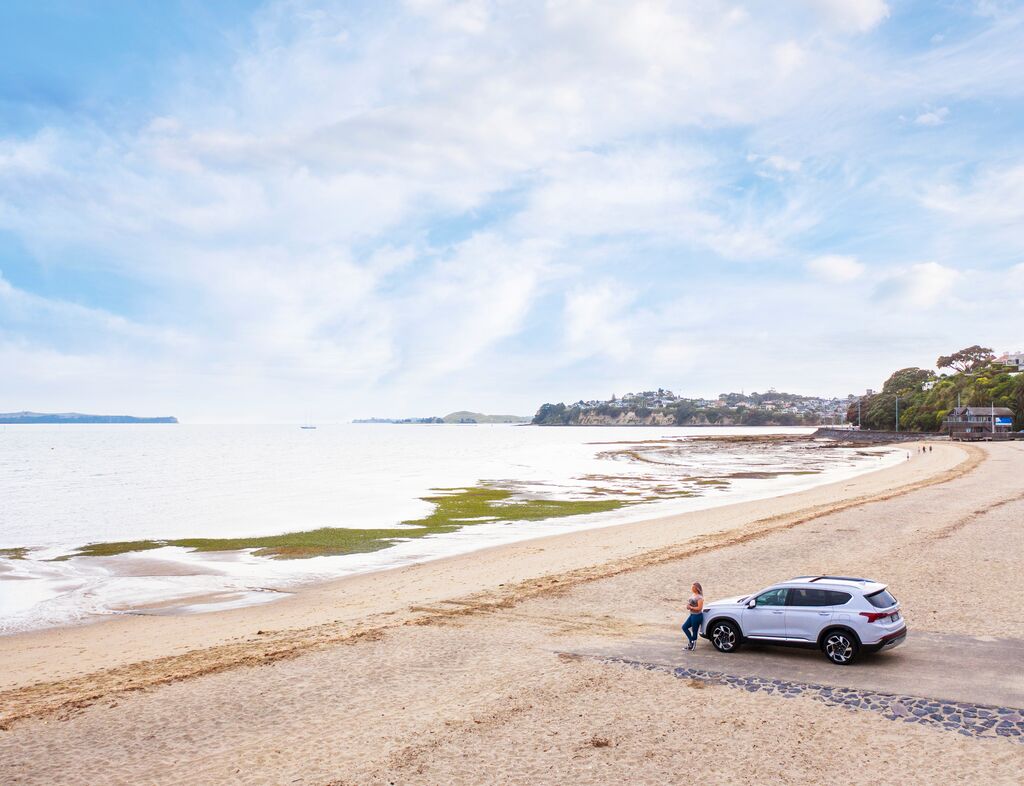Guest blog by Dominic Surlis, Consultancy Services, LeasePlan UK
The rising cost of living is on everybody’s minds, and for good reason. At its most recent meeting, the Bank of England’s monetary policy committee raised inflation expectations to a peak of 11%, a level not seen for over 40 years.
A little-discussed aspect of this crisis will be on the minds of many company car drivers and fleet managers: as fuel and electricity costs have risen dramatically, the HMRC advisory fuel rates used by many businesses have badly lagged behind.
At a time when unfilled vacancies mean companies are asking employees to do more – including more mileage – in order to cover gaps, a business mileage policy that leaves drivers out of pocket is in nobody’s interest.
So how bad is the problem, and what can businesses do to address it?
Fuel prices are up more than 60% since the start of 2021
The average UK retail price of a litre of diesel in the week to 4th January 2021 was 119.97 pence per litre (ppl). In the week to 20th June 2022 it reached 194.87 ppl, an increase of 62%. And as the oil price is increasing again, the prospect of £2 per litre seems ever more likely.
Source: Energy prices statistics team at BEIS https://www.gov.uk/government/statistics/weekly-road-fuel-prices
This increase had been steady throughout 2021 and the beginning of 2022 (apart from the bump caused by panic buying on news of shortages in autumn 2021). But when Russia invaded Ukraine, and the world reacted with strong economic sanctions, prices jumped by 17% in a matter of weeks.
These increases are a big part of the cost-of-living crisis affecting us all at the moment. But for company car drivers and fleet managers, rapidly rising pump prices are a particular problem owing to the extent to which business mileage reimbursement policies tend to rely on HMRC’s advisory fuel rates (AFRs) for guidance.
Many businesses reimburse their employees for business mileage via expenses claims. To simplify the process, HMRC offers advisory rates which it considers the fair cost per mile for company car drivers. Businesses adopting these rates in their expenses policy need not provide receipts or personal mileage records, and payments can be made free of tax and NI. This saves a lot of time and admin for companies and their drivers, and so AFRs are used almost universally in expense claims.
HMRC updates the rates on a quarterly basis, taking account of average costs over the preceding quarter. Necessarily, this is a backward-looking process. But in periods where prices fluctuate without dramatic increases or decreases, the advisory rates tend to be a good approximation of actual costs over the quarter. The problem is that the advisory rates quickly fall behind costs when fuel prices rise rapidly over a sustained period.
How big is the problem?
From March to May this year, the HMRC AFR for diesel cars up to 2,000 cc was 13 pence per mile. For a driver getting 52.9 miles per gallon (the average efficiency used by HMRC in their calculations), this equates to 151.27 pence per litre of fuel. Over the same period, fuel prices averaged 173.54 ppl.
This disparity between fuel costs and reimbursement income means that an employee driving 1,250 miles per month as part of their job, would have found themselves £75 out of pocket on average over the quarter.
What can companies do about it?
Many companies recognise that this is a problem, and don’t want to put their employees in the position of having to subsidise business mileage. LeasePlan Consultancy Services has spoken to several clients who plan to make top-up payments to company car drivers to make good the shortfall.
This starts by working out how much the shortfall is. From March to May this year (aligned with the AFR quarter), the gap between HMRC AFR rates for typical diesel company cars and typical costs worked out at about 2 pence per mile (ppm).
Checking historical mileage expense claims should be fairly straightforward, but to give the company car driver 2 ppm, the company will have to add the cost of income tax, National Insurance and employer’s National Insurance. This means that for the company car driver to receive £75, the company has to pay out £112 for basic rate taxpayers or £132 for higher rate taxpayers.
Other companies will look to collect the data needed to demonstrate that this reflects the actual cost of fuel used exclusively for business, obviating the need to pay tax and NI. But the need for wholesale changes to the expenses policy – with or without a switch to use of company fuel cards – will present a barrier that many businesses will find too high.
Electricity costs are also rising rapidly
The domestic energy price cap makes day-to-day changes in electricity prices less visible, but electric vehicle (EV) company car drivers will be well aware that costs have risen from around 14 pence per kilowatt hour to 28 pence per kilowatt hour (pp kWh). OFGEM expects a further 40% increase in the price cap in October, so costs of 39 pp kWh seem likely in Q4.
Additionally, the energy costs for businesses are not subject to the price cap, which has led to public charging network costs rising even more rapidly. Costs above 40 pp kWh are already common, and for the most rapid chargers, costs can reach 69 pp kWh.
The advisory electricity rate has not kept pace with costs
HMRC also offers an advisory electricity rate (AER), but this has not risen from 5 ppm since December 2021. EV efficiency can vary, but typically from 2 to 4 miles per kWh. Taking a 3 miles per kWh average, 5 ppm reimbursement would break even with charging costs of 15 pp kWh. As costs are well above that level, EV company car drivers are incurring significant out-of-pocket costs for business mileage.
For the EV company car driver who can charge their car at home, the gap opened up noticeably in April 2022 with the raising of the domestic energy price cap. For a driver covering 1,250 business miles per month, by the end of June they will have paid £150 more for electricity for business mileage than they have received in AER reimbursement.
As EV prevalence grows, more and more company car drivers will be unable to charge at home, but will be dependent on the public charging network. For the same mileage, these drivers will have incurred a shortfall of £375.
HMRC has signalled that an increase in the AER is unlikely to be forthcoming, so – whether company car drivers charge at home or in public – their business mileage reimbursement shortfall will keep growing.
Companies may want to pay a mileage top up for EV drivers
As with petrol and diesel company cars, businesses will not want their EV-driving employees to be out of pocket on business mileage. But establishing actual costs of business mileage – when domestic fuel bills, public charging networks and workplace charging facilities might all come into play – is even more difficult than for ICE cars. As such, a taxable top up payment will be the most workable solution for most employers.
Setting the level will be subjective: it will need to account for average EV efficiency, average electricity costs at home and in public, and the typical split in charging behaviour. But again, any payment will be subject to income tax, national insurance and employer’s national insurance.
Taking the domestic example, where costs of 28 pp kWh work out at around 9 ppm, the payment would have to be grossed up to between 11.75 and 13.5 ppm. That would mean a £150 net payment would carry a cost of between £195 and £225 to the employer.
What more could the government do?
This disparity between fuel costs and business mileage reimbursement is only one part of a multi-faceted cost-of-living crisis as we deal with sustained inflation at levels unseen for 40 years. While most businesses will want to help their employees deal with this part of it at least, the extra cost of income tax, National Insurance and employer’s National Insurance on any top-up payments is an unnecessary expense.
It is not government policy for a portion of business mileage costs to be taxable. Indeed, for businesses that pay for fuel and electricity directly, or that have adequate mileage capture and reporting in place to prove business mileage costs, this is not an issue. And in normal times, the HMRC advisory rate system works well. But we’re in a period of exceptional price increases, with the cost of living putting pressure on us all. This is an area where small policy changes could mean big improvements.
For petrol and diesel cars, a simple fix would be to allow retrospective mileage payments tax free up to the value of the subsequent quarter’s advisory rate. For example, the diesel rate introduced in June of 16 ppm would be more than adequate for the period March to May (even if it is likely to be well below actual costs by the time we get to the next advisory rate update in September).
For electric cars the issue of the price difference between domestic vs public network charging costs is longstanding and offers no simple fix. But it’s inexplicable that a doubling of domestic energy costs has been met with no change in the advisory electricity rate. To the extent that it discourages business use of electric vehicles rather than petrol and diesel it runs completely counter to government policy on reducing fleet emissions. At the very least the AER should rise to 9 pence per mile now (and ideally applied retrospectively from April 2022), with a further increase to follow in October with the new energy price cap.
How can LeasePlan help?
If you’re struggling with this situation, we can help. To understand more about what’s going on with fuel costs and fuel reimbursement, and for help designing a business mileage top-up policy response, please speak with your Account Manager. Alternatively, if you like to measure the actual costs of business mileage, you might benefit from our mileage capture and fuel card products.
In addition, for broader help with the challenges that business face, please speak with our Consultancy Team.




